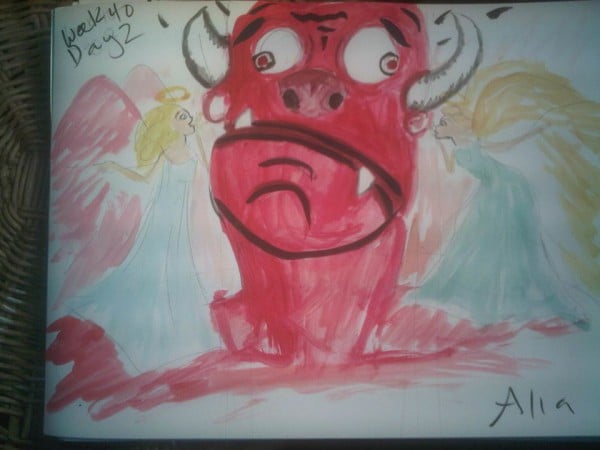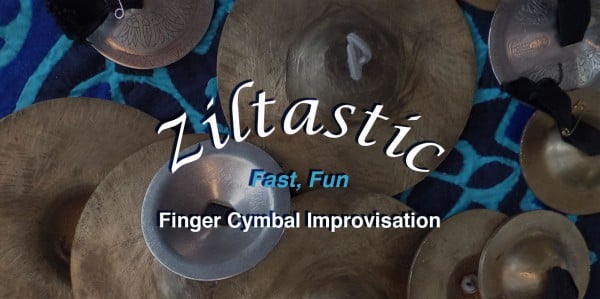#SPLday6-7
How to choose finger cymbals the Goldilocks way
When Goldilocks discovered the three bears’ house, she tried out every bowl of porridge, every chair and every bed until she found the one that was “just right.” Choosing finger cymbals (aka zils, zills, or sagat) is the same way. Too loud, too heavy, too big, too small–it takes time to find what you like. “Just right” is different for everyone, so it’s worth sleeping around to find your perfect match.
I found my go-to finger cymbals at Rakkasah West in California. Back in the mid-90’s, we didn’t have much choice. A few teachers sold small assortments of gear, but other than that, you were out of luck. Few websites. No sound files. No Amazon. And no Google. It was a lot harder to find what you wanted. So imagine the knee-weakening affect of Saroyan’s display–full sets of every zil they made, ready to play, laid out there for sampling. Every zil. That’s dozens of sets, even more if you count every gauge plus bronze and silver–and you have to, because they each sound different.
So yeah, pig heaven. I am proud to say that I played EVERY SINGLE ONE in search of my dream zils. I wanted something medium-sized with a low tone (I hate that high-pitched ring that hangs in the air). So I played them all, and I made a choice. It was pricey, too. Good cymbals are, because they are carefully made of high quality materials–often hand-cast bell bronze or German silver.
The main things to consider in a set of finger cymbals are size, weight, and sound. There is also price, of course. Expect to spend $15-25 for a set of student-quality cymbals, and $35-70 (and up) for pro quality (vendor links at the end of the post). A set is 4 cymbals, two for each hand. In general, opt up. Good finger cymbals last practically forever, and never go out of style. Buy the best quality you can afford. You won’t regret it.
Size matters. So does weight. I have cymbals ranging from tiny Saroyan Tinkerzills to 6-inch orchestra-quality monsters. Some feel comfortable in my hand, some pinch with with every tek. Some are so heavy my arms hurt, and some are so light that no one can hear them. Size and weight go together, of course–I mean, it’s metal. The bigger the instrument, the heavier it is. But there are also different thicknesses of metal, so two sets of the same size can have different weights.
Light and heavy are different for each person–you want to find your sweet spot. The smaller and lighter the zil, the easier it is to play–but the thinner the sound. Too big or heavy, however, and your hands will be uncomfortable and tire easily. It’s fine to start with smaller, lighter, less expensive zils, and progress towards pro-quality instruments. Many dancers practice with heavier zils, then perform wearing a lighter set, so that the performance is easier. It’s all about finding your “Just Right.”
The mother of all concerns is sound. No one wants to sound crappy. Listen a lot, and find what you like. For me, the ultimate dealbreaker is that high-pitched ring that hangs in the air long after the cymbal has sounded. Yet other folks I know love that sound. So there you go.
There are two main styles of cymbal–Egyptian and Turkish. Egyptian sagat have a wide, flat lip around the bell. Turkish style zils have a narrower, often slightly upturned lip. Each type has has a different sound (and some different playing techniques). There are also specialty folkloric cymbals from various places. What matters most is that you like what you have. That is the bottom line. You can get fancy later. For now, just buy whatever you like.
There are also two main styles of cymbal attachment–single hole or double slots.
The single hole is old-style–all zils used to be made this way. Egyptian sagat still are. So are some Zildjians and many smaller makers (LOTS of crap cymbals will have a single hole. You really do get what you pay for, so beware). The elastic goes through the hole and is secured on the other side by anything from a large knot to a button or a washer (creativity abounds). They are more challenging to play, as the connection between zil and finger is smaller, but their sound is often superior.
Slots are new. The elastic goes in one slot and out the other. Most of the big makers do double slots. They are easier to play, because they sit more firmly on the finger, but they do tend to have that ring.
So how do you find “just right”?
Ideally, you play them in person. Reading descriptions on the internet, even listening to sound files is great. Feeling those babies on your own hands, hearing them with your own ears, that is better.
However, few of us have a large retailer right down the road. So we have to get clever. Listen to the zils you hear people playing. When you hear something you like, ask the dancer what kind they are, and where s/he got them. When you go to a festival, play all the cymbals available. Try out lots of options to help your body find its “Just Right.” Don’t even ask the price unless you like the zils.
When you buy sight unseen, do your research. Ask other dancers what they like. Listen to the sound files. Both Saroyan and Turquoise have sound files or videos for every zil they sell. Call the place up and discuss what you want–ask them to pay the zils over the phone. Take your time to find what you want.
Choosing a first set of zils can feel daunting. Don’t get crazy about it. If you enjoy playing zils, you will end up with many, many more–each set unique (my student zil bag is filled with zils I got that weren’t quite what I wanted). And even though I have some great finger cymbals, I am always on the lookout for more.
Get what you like. You’re the one who’s going to play them. Pick whatever makes you happy and have a good time. What did I choose from Saroyan that day? The German silver Tutankhamen Pro. I still play them almost every show. They have some of that ring, but for almost 20 years now they are my “just right.”
That’s how it is with finger cymbals.
PS a couple of Vendors: Turquoise and Saroyan make quality cymbals. So does Zildjian (and they are LOUD). Yasmin Henkesh sells Egyptian sagat (and she is a love, plus she knows her stuff)
+++++
I’m deep in Gumroad’s Small Product Lab–build and launch a new product in 10 days. Ziltastic! A video CRASH Course in Finger Cymbal Improvisation is what has emerged from this process. This is a snippet from that project. I hope you enjoyed it.
Thanks for reading!
Love,
Alia
PS here is me performing improv with finger cymbals



